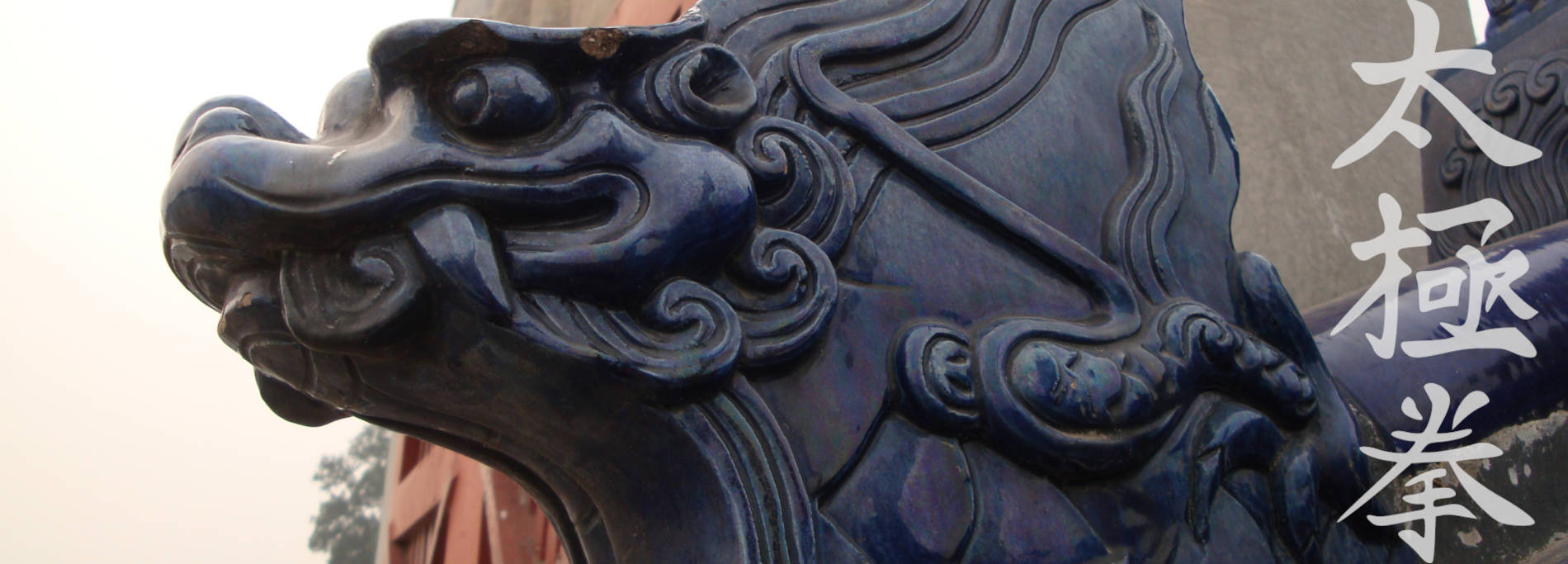Methods in form practice
 I remember when I looked at the manuals of old it always seemed to me that the postural details found in the descriptions were somehow a bit arbitrary. It didn't seem easily understandable how they really linked up and thus they lost their importance and relevance to me back then. Of course, the books (like Chen Xin's here on the right) were not really meant to be easily understandable "do it yourself" books in the first place.
I remember when I looked at the manuals of old it always seemed to me that the postural details found in the descriptions were somehow a bit arbitrary. It didn't seem easily understandable how they really linked up and thus they lost their importance and relevance to me back then. Of course, the books (like Chen Xin's here on the right) were not really meant to be easily understandable "do it yourself" books in the first place.
When I started to train with Chen Yu I it slowly dawned on me how the actual practice works and I started to do research on the transmitted Taijiquan texts. With shifu's teaching I could suddenly understand the original Chinese texts as the words he used to explain the practical work were basically the same used back in the days. Being taught that way, I slowly realised how in Chinese martial arts tradition all details can be compiled and grouped into certain methods. I cannot speak of other traditions, but in the lineage of Chen Zhaokui we attach utmost importance to these methods. For example, there is a breathing method or a stepping method in Chen Taijiquan. We then learn the details of the breathing or stepping in certain movements and bundle them together so they become methods. Then they can be used in all situations. But there is no shortcut to this process. We cannot just skip the details, but we we have to dig deep to build high. In practice, we have to learn the details in the form, connect them to understand the methods behind them and then we can come to understand the principles behind them. It is a very inductive, contextual approach. We cannot just learn "the principles" and hope to be able to put them into the actual practice one day.
Gongfu methods in class
This video was taken sometime in August 2020. I did it originally as an addition to an online class. It wasn't meant for the general public and I don't believe in a hop on hop off kind of learning so I am always a bit reluctant to show these things which are always a bit out of context for someone watching this on YouTube or so. But later I decided it might still be interesting to show some of the teaching methodology in our line and to gain a basic understanding of Chen Taijiquan methods in general. In a way this video exemplifies how I teach some details in the form so my students better understand the methods involved. It is thus a bit like a modern (moving image) version of the book mentioned above:
 As you can see every movement has certain meanings in terms of practical, martial usage called 用法 yongfa (shown at the end of the video). These are expressions of the overall force 劲 jin of the respective postural dynamic usually called 势 shi. However, these overall forces are internally connected in a yin-yang sort of fashion, consisting of forces, counterforces and intricate balances around stable body axes.
As you can see every movement has certain meanings in terms of practical, martial usage called 用法 yongfa (shown at the end of the video). These are expressions of the overall force 劲 jin of the respective postural dynamic usually called 势 shi. However, these overall forces are internally connected in a yin-yang sort of fashion, consisting of forces, counterforces and intricate balances around stable body axes.
Thus we create the specific force called "peng" 掤 in Taijiquan practice. To create the overall dynamic in each posture we have to be taught methods of force work 劲功 jingong, of leg work 腿法 tuifa, stepping 步法 bufa, hand methods 掌法 zhangfa, of intention work 意功 yigong, the eye method 眼法 yanfa and about all the other segments of our body and how they coordinate: the chest, the shoulders, the elbows and so on - they all have a certain function. Thus we create the whole-body force 整体功 zhengti jin. Without knowing the details one can only train with many repetitions and hope that some day something might develop. Knowing the methods will ensure we can follow the process and develop the skills step by step.
We should, however, be careful if only words are being taught instead of methods. When a leg should "spiral" for example and demonstrate silk reeling force, this is not enough information for the actual practice. This is not a method, it is just a word. Though basically correct, the information will usually lead to compeletely wrong results. I have seen people put their weight into the middle of the foot, sink their weight down and then twist their legs. This will ruin the joint health of the practioner in the long run. So please don't learn the words, but really learn the methods and all the details involved! A teacher should be able to explicate these. There should be no weight change without a method, no hand circling etc.
I made a lot of mistakes myself. In my early Taiji life most people talked about "principles". It was a bit like hoping we could jump a couple of things by adhering to these "principles". I hope I can prevent my students to make the same mistakes. Or at least to enable them to make their own instead :-) Better we learn details, techniques, and methods, something really tangible we can work on. We really have to dig deep to build high!

